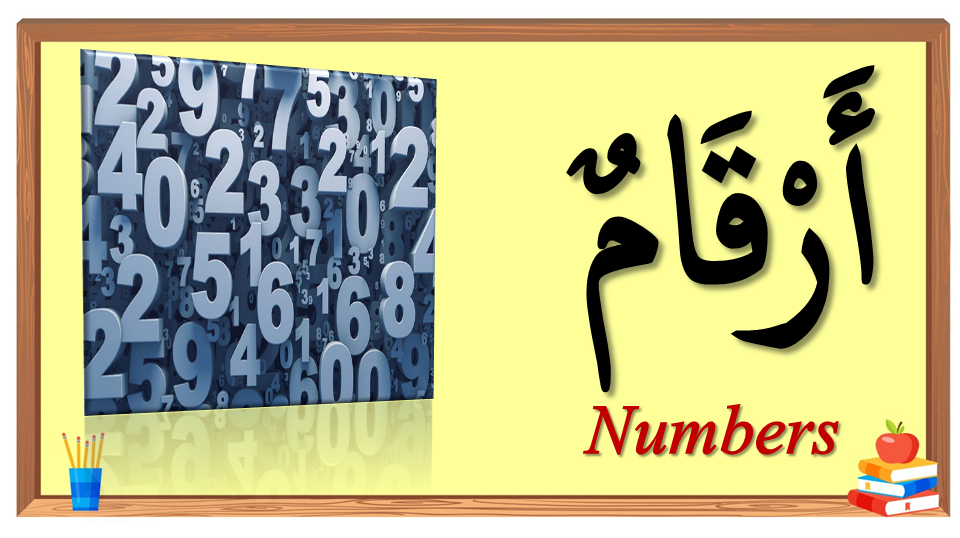Learning Arabic Numbers: A Simple Guide
Welcome to our guide on Arabic numbers! Arabic numbers, also known as Hindu-Arabic numerals, are the ten digits we use every day: 0, 1, 2, 3, 4, 5, 6, 7, 8, and 9. These numerals originated in India and were later transmitted to the Western world via the Islamic world, hence the name “Arabic numbers.”
In this post, you will learn how to read and write numbers from 0 to 100 in Arabic. This includes the Arabic numerals themselves, their English equivalents, and their transliterations (how they are pronounced). Understanding these numbers is essential for anyone interested in learning the Arabic language, traveling to an Arabic-speaking country, or exploring the rich cultural heritage of the Arab world.
Arabic numerals are used globally in various fields, including mathematics, science, and commerce, due to their simplicity and efficiency. However, the written form of these numbers in Arabic script may look different from what you’re used to in English. By familiarizing yourself with this table, you will be able to recognize and write Arabic numbers, making it easier to navigate through everyday situations, such as reading prices, dates, and phone numbers in Arabic.
Dive into the table below and start your journey of learning Arabic numbers!
Arabic Numbers from 0 to 100
| English | Arabic Numerals | Arabic Words | Transliteration |
|---|---|---|---|
| 0 | ٠ | صفر | Sifr |
| 1 | ١ | واحد | Waahid |
| 2 | ٢ | اثنان | Ithnayn |
| 3 | ٣ | ثلاثة | Thalaatha |
| 4 | ٤ | أربعة | Arba’a |
| 5 | ٥ | خمسة | Khamsa |
| 6 | ٦ | ستة | Sitta |
| 7 | ٧ | سبعة | Sab’a |
| 8 | ٨ | ثمانية | Thamaaniya |
| 9 | ٩ | تسعة | Tis’a |
| 10 | ١٠ | عشرة | Ashara |
| 11 | ١١ | أحد عشر | Ahad ‘ashar |
| 12 | ١٢ | اثنا عشر | Ithnaa ‘ashar |
| 13 | ١٣ | ثلاثة عشر | Thalaathat ‘ashar |
| 14 | ١٤ | أربعة عشر | Arba’at ‘ashar |
| 15 | ١٥ | خمسة عشر | Khamsat ‘ashar |
| 16 | ١٦ | ستة عشر | Sittat ‘ashar |
| 17 | ١٧ | سبعة عشر | Sab’at ‘ashar |
| 18 | ١٨ | ثمانية عشر | Thamaaniyat ‘ashar |
| 19 | ١٩ | تسعة عشر | Tis’at ‘ashar |
| 20 | ٢٠ | عشرون | Ishroon |
| 21 | ٢١ | واحد وعشرون | Waahid wa ishoon |
| 22 | ٢٢ | اثنان وعشرون | Ithnayn wa ishoon |
| 23 | ٢٣ | ثلاثة وعشرون | Thalaatha wa ishoon |
| 24 | ٢٤ | أربعة وعشرون | Arba’a wa ishoon |
| 25 | ٢٥ | خمسة وعشرون | Khamsa wa ishoon |
| 26 | ٢٦ | ستة وعشرون | Sitta wa ishoon |
| 27 | ٢٧ | سبعة وعشرون | Sab’a wa ishoon |
| 28 | ٢٨ | ثمانية وعشرون | Thamaaniya wa ishoon |
| 29 | ٢٩ | تسعة وعشرون | Tis’a wa ishoon |
| 30 | ٣٠ | ثلاثون | Thalathoon |
| 31 | ٣١ | واحد وثلاثون | Waahid wa thalathoon |
| 32 | ٣٢ | اثنان وثلاثون | Ithnayn wa thalathoon |
| 33 | ٣٣ | ثلاثة وثلاثون | Thalaatha wa thalathoon |
| 34 | ٣٤ | أربعة وثلاثون | Arba’a wa thalathoon |
| 35 | ٣٥ | خمسة وثلاثون | Khamsa wa thalathoon |
| 36 | ٣٦ | ستة وثلاثون | Sitta wa thalathoon |
| 37 | ٣٧ | سبعة وثلاثون | Sab’a wa thalathoon |
| 38 | ٣٨ | ثمانية وثلاثون | Thamaaniya wa thalathoon |
| 39 | ٣٩ | تسعة وثلاثون | Tis’a wa thalathoon |
| 40 | ٤٠ | أربعون | Arba’oon |
| 41 | ٤١ | واحد وأربعون | Waahid wa arba’oon |
| 42 | ٤٢ | اثنان وأربعون | Ithnayn wa arba’oon |
| 43 | ٤٣ | ثلاثة وأربعون | Thalaatha wa arba’oon |
| 44 | ٤٤ | أربعة وأربعون | Arba’a wa arba’oon |
| 45 | ٤٥ | خمسة وأربعون | Khamsa wa arba’oon |
| 46 | ٤٦ | ستة وأربعون | Sitta wa arba’oon |
| 47 | ٤٧ | سبعة وأربعون | Sab’a wa arba’oon |
| 48 | ٤٨ | ثمانية وأربعون | Thamaaniya wa arba’oon |
| 49 | ٤٩ | تسعة وأربعون | Tis’a wa arba’oon |
| 50 | ٥٠ | خمسون | Khamsun |
| 51 | ٥١ | واحد وخمسون | Waahid wa khamsun |
| 52 | ٥٢ | اثنان وخمسون | Ithnayn wa khamsun |
| 53 | ٥٣ | ثلاثة وخمسون | Thalaatha wa khamsun |
| 54 | ٥٤ | أربعة وخمسون | Arba’a wa khamsun |
| 55 | ٥٥ | خمسة وخمسون | Khamsa wa khamsun |
| 56 | ٥٦ | ستة وخمسون | Sitta wa khamsun |
| 57 | ٥٧ | سبعة وخمسون | Sab’a wa khamsun |
| 58 | ٥٨ | ثمانية وخمسون | Thamaaniya wa khamsun |
| 59 | ٥٩ | تسعة وخمسون | Tis’a wa khamsun |
| 60 | ٦٠ | ستون | Sittoon |
| 61 | ٦١ | واحد وستون | Waahid wa sittoon |
| 62 | ٦٢ | اثنان وستون | Ithnayn wa sittoon |
| 63 | ٦٣ | ثلاثة وستون | Thalaatha wa sittoon |
| 64 | ٦٤ | أربعة وستون | Arba’a wa sittoon |
| 65 | ٦٥ | خمسة وستون | Khamsa wa sittoon |
| 66 | ٦٦ | ستة وستون | Sitta wa sittoon |
| 67 | ٦٧ | سبعة وستون | Sab’a wa sittoon |
| 68 | ٦٨ | ثمانية وستون | Thamaaniya wa sittoon |
| 69 | ٦٩ | تسعة وستون | Tis’a wa sittoon |
| 70 | ٧٠ | سبعون | Sab’oon |
| 71 | ٧١ | واحد وسبعون | Waahid wa sab’oon |
| 72 | ٧٢ | اثنان وسبعون | Ithnayn wa sab’oon |
| 73 | ٧٣ | ثلاثة وسبعون | Thalaatha wa sab’oon |
| 74 | ٧٤ | أربعة وسبعون | Arba’a wa sab’oon |
| 75 | ٧٥ | خمسة وسبعون | Khamsa wa sab’oon |
| 76 | ٧٦ | ستة وسبعون | Sitta wa sab’oon |
| 77 | ٧٧ | سبعة وسبعون | Sab’a wa sab’oon |
| 78 | ٧٨ | ثمانية وسبعون | Thamaaniya wa sab’oon |
| 79 | ٧٩ | تسعة وسبعون | Tis’a wa sab’oon |
| 80 | ٨٠ | ثمانون | Thamaanoon |
| 81 | ٨١ | واحد وثمانون | Waahid wa thamaanoon |
| 82 | ٨٢ | اثنان وثمانون | Ithnayn wa thamaanoon |
| 83 | ٨٣ | ثلاثة وثمانون | Thalaatha wa thamaanoon |
| 84 | ٨٤ | أربعة وثمانون | Arba’a wa thamaanoon |
| 85 | ٨٥ | خمسة وثمانون | Khamsa wa thamaanoon |
| 86 | ٨٦ | ستة وثمانون | Sitta wa thamaanoon |
| 87 | ٨٧ | سبعة وثمانون | Sab’a wa thamaanoon |
| 88 | ٨٨ | ثمانية وثمانون | Thamaaniya wa thamaanoon |
| 89 | ٨٩ | تسعة وثمانون | Tis’a wa thamaanoon |
| 90 | ٩٠ | تسعون | Tis’oon |
| 91 | ٩١ | واحد وتسعون | Waahid wa tis’oon |
| 92 | ٩٢ | اثنان وتسعون | Ithnayn wa tis’oon |
| 93 | ٩٣ | ثلاثة وتسعون | Thalaatha wa tis’oon |
| 94 | ٩٤ | أربعة وتسعون | Arba’a wa tis’oon |
| 95 | ٩٥ | خمسة وتسعون | Khamsa wa tis’oon |
| 96 | ٩٦ | ستة وتسعون | Sitta wa tis’oon |
| 97 | ٩٧ | سبعة وتسعون | Sab’a wa tis’oon |
| 98 | ٩٨ | ثمانية وتسعون | Thamaaniya wa tis’oon |
| 99 | ٩٩ | تسعة وتسعون | Tis’a wa tis’oon |
| 100 | ١٠٠ | مئة | Mi’a |
Feel free to use this table to enhance your understanding and practice of Arabic numbers. Happy learning!
The Final Step in the Arabic Numbers Journey
As we conclude our guide on Arabic numbers, we hope you’ve grown more confident in using these numerical symbols across various situations. Whether you’re bargaining in a bustling market or scheduling an appointment, the insights you’ve gained are not merely theoretical; they’re a practical tool that connects cultures and streamlines communication.
Remember, mastering Arabic numbers opens a world of possibilities, whether in business dealings, delving into historical manuscripts, or making new acquaintances. Keep practicing, and the numbers will soon become a part of your instinct. Learning Arabic Numbers is not just about memorizing sequences; it’s about discovering a key element of a language steeped in history and impact.
We encourage you to continue delving into the depths of the Arabic language, with numbers as your guide to deeper understanding. Thank you for joining us on this numerical odyssey, and may your path in learning Arabic numbers be as fruitful as it is illuminating.




